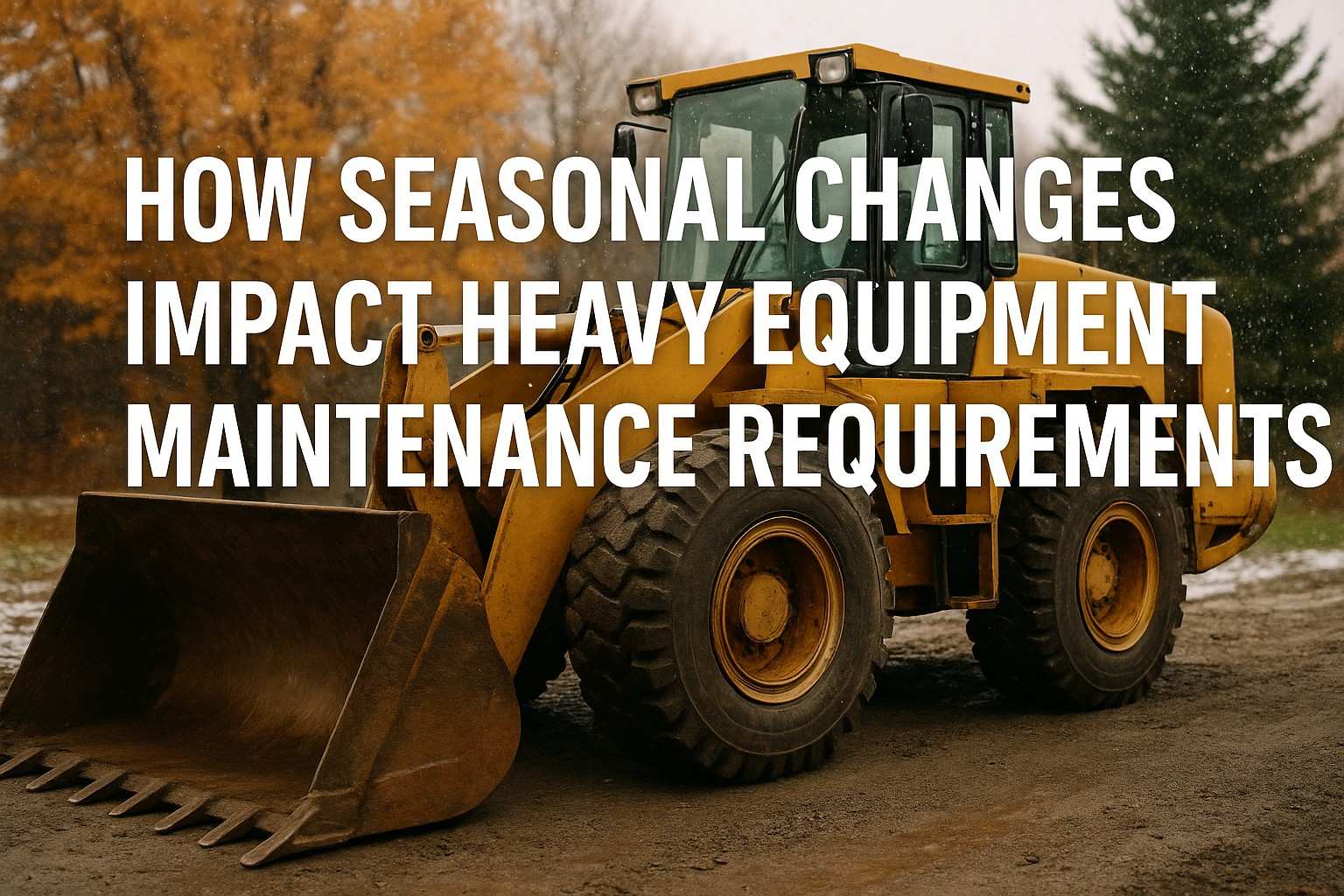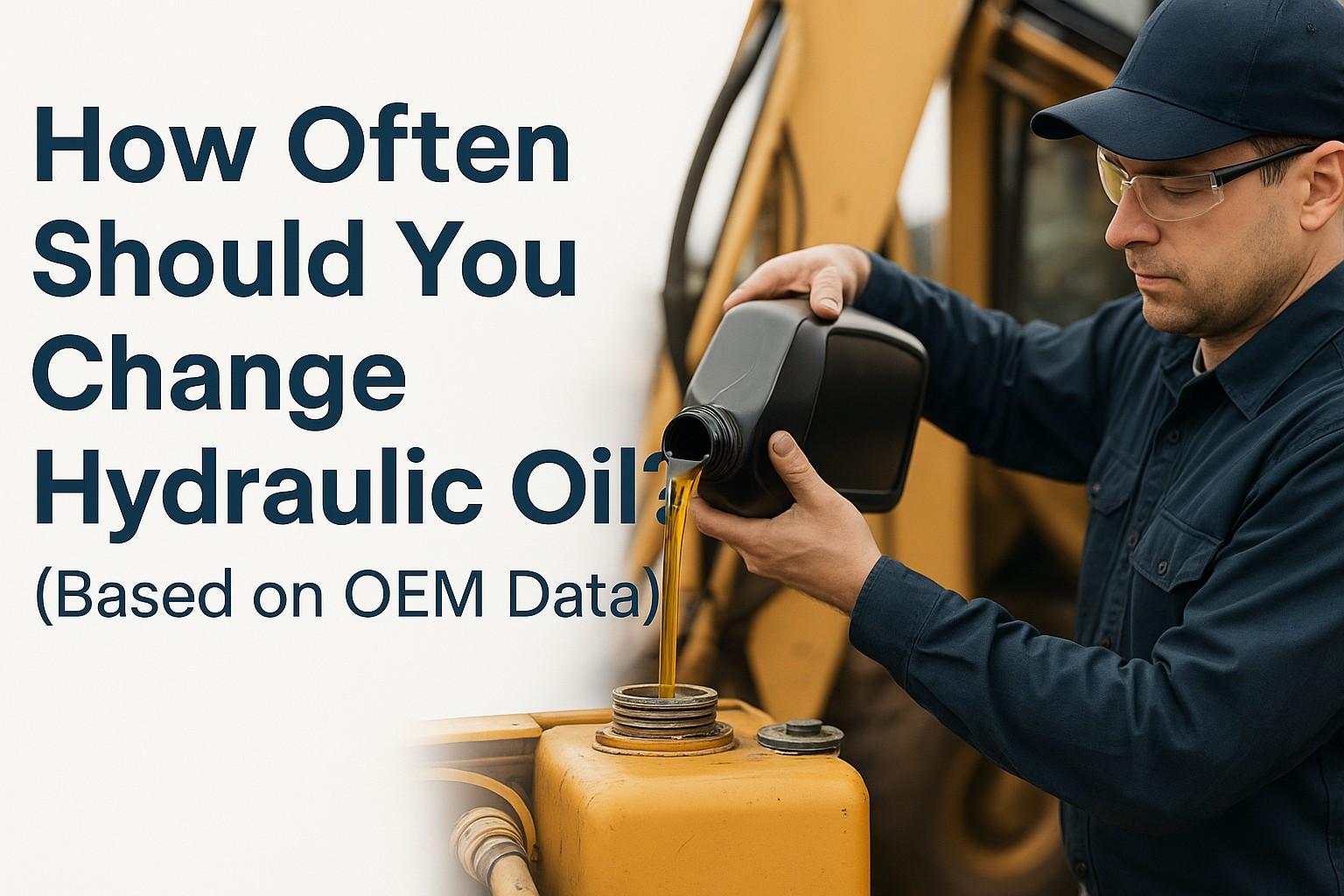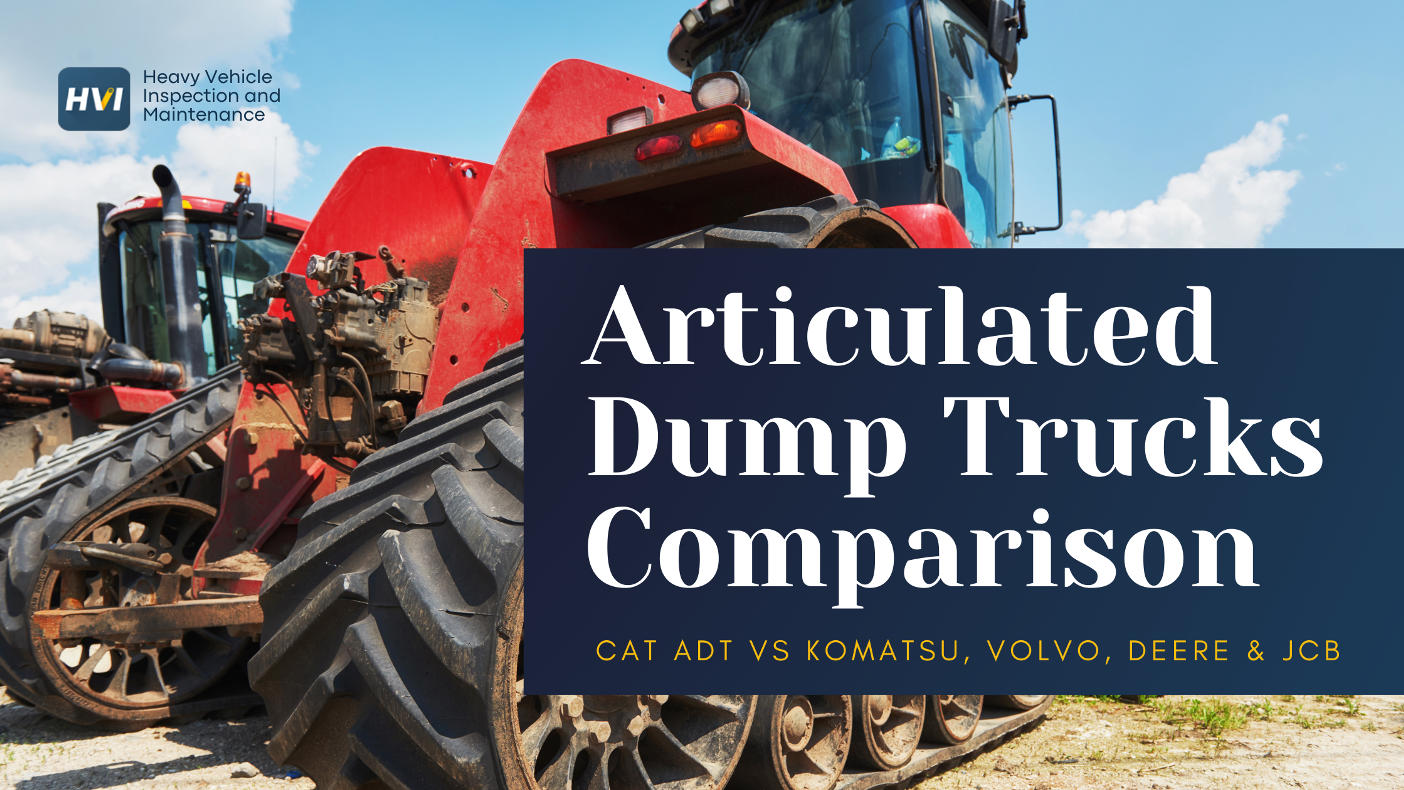Heavy equipment operators lose an average of $18,500 annually per machine due to improper oil selection, with 68% of premature engine failures directly linked to lubrication issues that synthetic oil technology could have prevented. Modern synthetic oils deliver 45% better engine protection, 35% extended drain intervals, and 28% improved fuel economy compared to conventional alternatives, yet only 42% of construction fleets have adopted comprehensive synthetic oil programs despite proven ROI exceeding 400% within 24 months.
This comprehensive synthetic oil guide eliminates confusion around oil selection, reveals cost-saving opportunities worth $15,000+ per machine annually, and provides implementation strategies that transform equipment maintenance from reactive expense to proactive investment. Whether managing a single excavator or a 50-unit fleet, understanding synthetic oil technology is essential for maximizing equipment life, minimizing operational costs, and maintaining competitive advantage in today's demanding construction environment.
Synthetic Oil Performance Impact
$18.5K
Annual Loss from Wrong Oil
45%
Better Engine Protection
35%
Extended Drain Intervals
400%
ROI Within 24 Months
Ready to Optimize Your Fleet's Oil Program?
Discover how synthetic oil strategies can transform your maintenance costs and equipment reliability.
Getting Started
Understanding Synthetic Oil: The Foundation of Modern Equipment Protection
Synthetic oil represents a revolutionary advancement in lubrication technology, engineered at the molecular level to deliver consistent performance characteristics that conventional petroleum-based oils simply cannot match. Unlike conventional oils refined from crude petroleum with inherent impurities and molecular inconsistencies, synthetic oils are precisely manufactured using advanced chemical processes that create uniform molecular structures optimized for specific performance requirements.
The fundamental difference between synthetic and conventional oil lies in molecular uniformity and purity. Synthetic base stocks contain molecules of consistent size and shape, eliminating the irregularities that cause conventional oils to break down under extreme conditions. This molecular precision enables synthetic oils to maintain viscosity across temperature extremes, resist oxidation and thermal breakdown, and provide superior wear protection even under the most demanding operational conditions.
Full Synthetic Oil (100% Synthetic Base)
Premium protection using purely synthetic base stocks, delivering maximum performance in extreme conditions. Ideal for high-stress equipment, extreme temperatures, and extended drain intervals. Costs 40-60% more than conventional but delivers 300% better protection and 50% longer service life.
Synthetic Blend (25-50% Synthetic)
Cost-effective compromise combining synthetic and conventional base stocks. Provides improved protection over conventional oil at moderate price premium. Suitable for moderate-duty applications and transitioning fleets from conventional to full synthetic programs.
High-Mileage Synthetic Formulations
Specialized synthetic oils with seal conditioners and anti-wear additives for equipment with over 5,000 operating hours. Reduces oil consumption, minimizes leaks, and extends life of aging equipment by 25-35% compared to standard synthetics.
0W-20 Ultra-Low Viscosity Synthetic
Latest generation synthetic oil optimized for fuel economy and cold-weather performance. Provides instant lubrication at -40°F while maintaining protection at 300°F+. Delivers 8-12% fuel economy improvement in compatible engines with advanced emission systems.
Critical Selection Warning:
Using incorrect oil viscosity or quality can void equipment warranties, cause catastrophic engine damage worth $45,000-$125,000, and increase fuel consumption by 15-20%. Never substitute oil grades without verifying manufacturer specifications, especially in equipment with diesel particulate filters (DPF) or selective catalytic reduction (SCR) systems requiring low-ash formulations.
The Science Behind Synthetic Oil Performance Advantages
Synthetic oil's superior performance stems from precisely engineered molecular structures that deliver predictable, consistent behavior across all operating conditions. Advanced polyalphaolefin (PAO) and ester base stocks provide thermal stability that prevents viscosity breakdown at temperatures exceeding 400°F, while maintaining fluidity at -50°F for instant cold-weather protection.
The molecular uniformity of synthetic oil creates a stronger lubricating film between moving parts, reducing metal-to-metal contact by up to 75% compared to conventional oils. This enhanced film strength is particularly critical in high-pressure zones like cam lobes, turbocharger bearings, and hydraulic pump components where conventional oils experience film collapse under extreme loads.
Key Performance Advantages of Synthetic Oil:
-
✓
Superior thermal stability resisting breakdown at temperatures 100°F higher than conventional oil limits
-
✓
45% better wear protection through enhanced film strength and anti-wear additive retention
-
✓
Cold-flow properties enabling instant lubrication at -40°F versus 0°F for conventional oils
-
✓
Oxidation resistance extending oil life by 50-100% under identical operating conditions
-
✓
Reduced volatility cutting oil consumption by 25-40% in high-temperature applications
-
✓
Cleaner engine operation with 50% less deposit formation on critical components
Real-World Cost Analysis: Synthetic vs. Conventional Oil Economics
While synthetic oil costs 40-60% more per gallon than conventional alternatives, comprehensive cost analysis reveals significant savings through extended drain intervals, reduced equipment wear, and improved fuel economy. A typical 350-horsepower excavator consuming 12 gallons of oil per change demonstrates clear economic advantages when total ownership costs are properly calculated.
Extended drain intervals represent the most immediate cost benefit, with synthetic oil safely extending service intervals from 250 hours to 500-750 hours based on oil analysis results. This reduction in oil change frequency saves $8,500-$12,000 annually per machine in materials and labor costs while minimizing equipment downtime that impacts project schedules and productivity.
Annual Cost Comparison for Heavy Equipment (350HP Excavator):
-
✓
Conventional Oil Program: $14,250 (oil: $8,400, labor: $3,600, filters: $2,250)
-
✓
Synthetic Oil Program: $8,750 (oil: $5,600, labor: $1,800, filters: $1,350)
-
✓
Direct Savings: $5,500 per machine annually through reduced service frequency
-
✓
Fuel Economy Improvement: $4,200 annual savings from 6% efficiency gain
-
✓
Reduced Wear Costs: $7,800 savings from 35% reduction in component replacement
-
✓
Total Annual Benefit: $17,500 per machine or $875,000 for 50-unit fleet
$17.5K
Annual Savings per Machine
500%
Extended Drain Intervals
35%
Reduced Component Wear
6-12%
Fuel Economy Improvement
Selecting the Right Synthetic Oil for Your Equipment
Proper synthetic oil selection requires understanding equipment specifications, operating conditions, and maintenance objectives to optimize protection and value. Modern construction equipment demands specific oil formulations based on emission system requirements, with Tier 4 Final engines requiring CK-4 or FA-4 low-ash formulations to protect diesel particulate filters and SCR catalysts.
Viscosity grade selection significantly impacts both protection and efficiency, with newer equipment designs trending toward lower viscosity grades like 0W-20 and 5W-30 for improved fuel economy without sacrificing protection. However, older equipment may require higher viscosity grades like 15W-40 to maintain proper oil pressure and compensate for increased bearing clearances from wear.
Climate Considerations
Select viscosity grades based on ambient temperature ranges. Use 0W-20 or 0W-30 for extreme cold (-40°F to 20°F), 5W-30 or 5W-40 for moderate climates (0°F to 100°F), and 15W-40 for consistently hot conditions (40°F to 120°F). Multi-grade synthetics provide broader temperature protection than single-grade alternatives.
Equipment Age and Condition
New equipment benefits from low-viscosity synthetics maximizing fuel economy and emissions compliance. Equipment with 3,000+ hours may require higher viscosity or high-mileage formulations with seal conditioners. Conduct oil analysis to determine optimal viscosity based on wear metals and viscosity retention.
Duty Cycle and Load Factors
High-load applications like mining and quarrying require robust synthetic formulations with enhanced anti-wear packages. Light-duty or intermittent use allows standard synthetic formulations. Consider synthetic blends for moderate-duty cycles as cost-effective compromise between protection and economy.
OEM Specifications and Warranties
Always verify manufacturer requirements for API service categories, viscosity grades, and special certifications. Using non-specified oils voids warranties and may cause equipment damage. Document oil selection decisions and maintain records for warranty claims and resale value protection.
Implementation Strategy: Converting Your Fleet to Synthetic Oil
Successfully transitioning from conventional to synthetic oil requires systematic planning to maximize benefits while managing conversion costs and operational impacts. The conversion process typically spans 6-12 months for complete fleet migration, with phased implementation minimizing disruption and allowing performance validation before full commitment.
Initial implementation should focus on high-value or high-hour equipment where synthetic oil benefits deliver maximum ROI. Monitor oil analysis results closely during transition to validate extended drain intervals and adjust maintenance schedules based on actual performance rather than conservative estimates.
Phase 1: Assessment and Planning (Months 1-2):
-
✓
Audit current oil costs including materials, labor, disposal, and downtime impacts
-
✓
Review equipment specifications and identify synthetic oil requirements for each unit
-
✓
Establish baseline through oil analysis to document current equipment condition
-
✓
Calculate ROI projections based on extended drains and efficiency improvements
-
✓
Select initial pilot equipment for synthetic conversion and performance validation
-
✓
Negotiate synthetic oil supply contracts for volume pricing and technical support
Phase 2: Pilot Implementation (Months 3-6):
-
✓
Convert 20-30% of fleet starting with newest or most critical equipment
-
✓
Implement oil analysis program with 100-hour sampling intervals initially
-
✓
Document fuel consumption changes and performance improvements
-
✓
Train maintenance staff on synthetic oil handling and compatibility requirements
-
✓
Gradually extend drain intervals based on oil analysis results and trends
-
✓
Monitor and address any seal leaks or compatibility issues during transition
Phase 3: Full Fleet Migration (Months 7-12):
-
✓
Complete conversion of remaining fleet based on pilot program success
-
✓
Optimize drain intervals to 500-750 hours based on validated oil analysis
-
✓
Implement predictive maintenance scheduling based on oil condition monitoring
-
✓
Establish synthetic oil storage and handling procedures to prevent contamination
-
✓
Document cost savings and performance improvements for management reporting
-
✓
Develop long-term contracts with suppliers for consistent pricing and availability
Brand Comparison: Mobil 1 vs. Castrol vs. Shell Rotella
Leading synthetic oil manufacturers offer specialized formulations for heavy equipment, each with unique advantages and optimal applications. Understanding brand differences enables informed selection based on specific equipment requirements, operating conditions, and cost considerations rather than marketing claims or brand loyalty.
Independent testing by equipment manufacturers and third-party laboratories consistently demonstrates comparable performance among major brands meeting identical specifications. Price variations of 15-25% between brands rarely correlate with proportional performance differences, making supplier reliability, technical support, and local availability more important selection criteria than brand prestige.
Mobil 1 Delvac Series
Industry-leading synthetic diesel engine oils with exceptional thermal stability and extended drain capabilities. Delvac 1 ESP 5W-30 provides superior fuel economy while meeting CK-4 specifications. Premium pricing offset by proven 750+ hour drain intervals. Extensive OEM approvals including Caterpillar, Cummins, and Detroit Diesel.
Castrol Vecton Series
Advanced synthetic formulations with System Pro Technology providing 45% extra performance reserve. Competitive pricing with strong wear protection and deposit control. Limited availability in some regions but excellent technical support. Particularly effective in European equipment from Volvo, Deutz, and MAN.
Shell Rotella T6
Full synthetic heavy-duty engine oil with Triple Protection Plus technology. Best value proposition with pricing 10-15% below premium competitors. Excellent cold-flow properties and fuel economy benefits. Wide distribution network ensures consistent availability. Proven performance in mixed fleets.
Chevron Delo 600 ADF
Revolutionary ultra-low ash formulation extending DPF service life by 2.5x. Premium pricing justified by exceptional emissions system protection. Limited viscosity options but superior oxidation control. Ideal for Tier 4 Final equipment requiring maximum aftertreatment protection.
Brand Mixing Caution:
Never mix different oil brands or formulations without verifying compatibility. While most API-certified oils are technically compatible, mixing can compromise additive packages and void warranties. If brand switching is necessary, conduct complete oil change with system flush to prevent incompatibility issues that could cost $25,000+ in engine repairs.
Oil Analysis: Maximizing Synthetic Oil Value Through Condition Monitoring
Oil analysis transforms synthetic oil programs from time-based maintenance to condition-based optimization, enabling drain interval extension while ensuring equipment protection. Regular sampling and testing identify developing problems 4-8 weeks before failure, preventing catastrophic damage while maximizing oil life and minimizing costs.
Comprehensive oil analysis programs cost $35-50 per sample but deliver returns exceeding 20:1 through optimized drain intervals and early problem detection. Modern laboratories provide results within 24-48 hours with automated alerts for critical conditions requiring immediate attention.
Essential Oil Analysis Parameters and Targets:
-
✓
Viscosity: Monitor for fuel dilution (<5%) or oxidation thickening (>20% increase)
-
✓
Total Base Number (TBN): Maintain >50% of new oil value for acid neutralization
-
✓
Wear Metals: Track iron (<100ppm), copper (<30ppm), lead (<20ppm) trends
-
✓
Contamination: Monitor silicon/dirt (<15ppm), water (<0.1%), glycol (0ppm)
-
✓
Oxidation/Nitration: Measure degradation rates to optimize drain intervals
-
✓
Particle Count: Ensure ISO cleanliness codes meet manufacturer specifications
Cold Weather Performance: Synthetic Oil Advantages in Extreme Conditions
Synthetic oil's superior cold-flow properties provide critical advantages in winter operations where conventional oils thicken dramatically, causing startup wear that accounts for 75% of total engine wear. At -20°F, conventional 15W-40 oil requires 15-30 seconds to reach critical components, while 0W-20 synthetic provides instant lubrication within 2-3 seconds.
Cold-weather startups with conventional oil can consume more wear budget than 500 hours of normal operation, making synthetic oil essential for equipment operating in northern climates or high-altitude conditions. The ability to eliminate block heaters through synthetic oil use saves $2,500-4,000 per machine in installation and electricity costs while improving equipment availability.
-50°F
Synthetic Pour Point
95%
Reduced Cold Start Wear
2-3 sec
Time to Full Lubrication
$3,500
Heater Cost Savings
Environmental Benefits and Sustainability Advantages
Synthetic oil programs significantly reduce environmental impact through decreased oil consumption, extended service life, and improved fuel efficiency that collectively reduce carbon emissions by 25-35% compared to conventional oil programs. A 50-unit fleet converting to synthetic oil eliminates approximately 8,500 gallons of waste oil annually while reducing CO2 emissions by 340 tons.
Extended drain intervals reduce oil disposal requirements by 60-70%, minimizing environmental contamination risks and disposal costs averaging $3.50 per gallon. Many synthetic formulations now incorporate renewable base stocks and biodegradable additives that further reduce environmental impact while maintaining superior performance characteristics.
Troubleshooting Common Synthetic Oil Challenges
While synthetic oil delivers superior performance, certain challenges require proper management to maximize benefits and avoid problems. Understanding common issues and solutions ensures successful implementation while preventing costly mistakes that could compromise equipment reliability or void warranties.
Seal Leakage in Older Equipment
Synthetic oil's superior cleaning properties may expose existing seal deterioration masked by conventional oil deposits. Solution: Use high-mileage synthetic formulations with seal conditioners, monitor for leaks during first 200 hours, and plan seal replacement during scheduled maintenance rather than emergency repairs.
Initial Consumption Increase
Some engines experience temporary oil consumption increase during synthetic conversion as deposits are cleaned. Solution: Monitor oil levels closely during first 500 hours, add oil as needed, and expect consumption to stabilize after 2-3 oil changes as engines achieve cleaner operation.
Additive Compatibility Issues
Aftermarket additives may react negatively with synthetic oil additive packages, causing precipitation or performance degradation. Solution: Avoid all aftermarket additives unless specifically approved by oil manufacturer, rely on oil analysis to verify performance rather than adding unnecessary supplements.
Extended Drain Interval Risks
Pushing drain intervals too aggressively without proper monitoring can cause expensive failures. Solution: Implement comprehensive oil analysis program, extend intervals gradually based on data, and maintain conservative approach for severe-duty applications regardless of oil quality.
Maximizing ROI Through Strategic Synthetic Oil Implementation
The transition to synthetic oil represents a strategic investment in equipment reliability, operational efficiency, and competitive advantage that delivers measurable returns exceeding 400% within 24 months. Construction companies implementing comprehensive synthetic oil programs report average savings of $15,000-20,000 per machine annually through reduced maintenance costs, extended equipment life, and improved fuel efficiency.
Success requires more than simply switching oil types; it demands systematic implementation, proper product selection, and ongoing monitoring to optimize benefits. Organizations that approach synthetic oil as a strategic initiative rather than a simple product substitution achieve superior results, with top performers realizing 50% maintenance cost reduction and 40% equipment life extension.
The construction industry's evolution toward higher efficiency standards, stricter emissions requirements, and increased operational demands makes synthetic oil adoption inevitable rather than optional. Early adopters gain competitive advantages through lower operating costs, improved equipment reliability, and enhanced sustainability credentials that influence project awards and customer relationships.
Transform Your Fleet's Performance with Synthetic Oil Excellence
Start implementing proven synthetic oil strategies and join leading contractors maximizing equipment ROI.
Getting Started
Book a Demo
Q1: Is synthetic oil really worth the extra cost for construction equipment that already has high operating expenses?
Yes, synthetic oil delivers ROI exceeding 400% through multiple value streams. While costing 40-60% more per gallon, synthetic oil enables 2-3x longer drain intervals, reducing annual oil costs by $5,500 per machine. Additional benefits include 6-12% fuel savings worth $4,200 annually, 35% reduction in component wear saving $7,800 in parts, and 25% less downtime worth $12,000 in productivity. Total annual savings of $17,500-20,000 per machine far exceed the premium price, with payback typically achieved within 4-6 months.
Q2: Can I safely extend oil drain intervals to 750 hours as synthetic oil manufacturers claim?
Extended drain intervals up to 750 hours are achievable but require proper validation through oil analysis. Start with manufacturer-recommended intervals, then gradually extend based on oil analysis results showing acceptable viscosity, TBN retention, and contamination levels. Factors affecting safe extension include equipment age, duty cycle, operating environment, and maintenance practices. Most fleets safely achieve 500-600 hour intervals, with 750 hours possible in ideal conditions. Never extend intervals without oil analysis validation, as premature failure costs far exceed any savings from extended drains.
Q3: Will switching to synthetic oil void my equipment warranty or cause problems in older machines?
Using synthetic oil meeting manufacturer specifications will not void warranties and often provides better protection than required. Always verify API service category and viscosity grade requirements in owner's manuals. For older equipment (5,000+ hours), synthetic oil may initially increase consumption or reveal existing seal leaks as deposits are cleaned. Use high-mileage synthetic formulations with seal conditioners for smooth transition. Document oil selection decisions and maintain records for warranty protection. Most manufacturers now recommend synthetic oil for optimal performance.
Q4: What's the real difference between full synthetic and synthetic blend oils for heavy equipment?
Full synthetic oils use 100% synthetic base stocks providing maximum performance, protection, and drain interval extension. Benefits include 45% better wear protection, operation from -50°F to 450°F, and safe extension to 500-750 hour drains. Synthetic blends contain 25-50% synthetic base mixed with conventional oil, offering moderate improvements at lower cost. Blends provide 20% better protection, -20°F to 350°F operating range, and 350-400 hour drain capability. Full synthetic costs 40% more but delivers 2x the benefits, making it optimal for severe-duty applications, extreme climates, or maximum ROI objectives.
Q5: How do I know which synthetic oil viscosity grade (0W-20, 5W-30, 15W-40) is right for my equipment?
Viscosity selection depends on manufacturer specifications, operating temperature range, and equipment condition. Modern Tier 4 engines often specify 0W-20 or 5W-30 for fuel economy and emissions compliance. Older equipment typically requires 15W-40 for proper oil pressure. Cold climates benefit from lower winter ratings (0W, 5W) for startup protection, while consistent hot weather may allow higher grades. Check owner's manual for approved grades, consider predominant operating temperatures, and use oil analysis to validate selection. Never substitute viscosity grades without manufacturer approval, as incorrect viscosity can cause immediate engine damage.
Q6: What oil analysis tests should I perform and how often when using synthetic oil?
Essential tests include viscosity, TBN, wear metals (iron, copper, lead), contamination (silicon, water, fuel), and oxidation/nitration levels. Sample new equipment every 100 hours initially, extending to 250-hour intervals once patterns establish. High-hour or severe-duty equipment requires 150-hour sampling. Cost of $35-50 per sample returns 20:1 through optimized drains and early problem detection. Use consistent sampling procedures, trend results over time rather than absolute values, and establish equipment-specific alarm limits. Modern labs provide 24-48 hour turnaround with automated critical alerts.
Q7: Should I use different synthetic oil brands in different equipment or standardize on one brand?
Standardizing on one or two synthetic oil brands simplifies inventory management, reduces contamination risks, and strengthens supplier relationships for better pricing and support. However, some equipment may have specific brand requirements for warranty compliance. Best practice involves selecting a primary brand meeting most specifications, with secondary brand for special requirements. Avoid mixing brands in same equipment without complete changeout. Benefits of standardization include 15-20% volume discount savings, simplified training, reduced storage requirements, and consistent performance monitoring. Ensure chosen brand has reliable supply chain and technical support.
Q8: How much fuel economy improvement can I really expect from switching to synthetic oil?
Fuel economy improvements typically range from 4-8% with low-viscosity synthetic oils, with some operations achieving 10-12% in optimal conditions. A 350HP excavator consuming 8 gallons/hour saves 0.3-0.6 gallons hourly, worth $4,200-8,400 annually per machine. Improvements result from reduced internal friction, better cold-start efficiency, and maintained viscosity under load. Actual savings depend on duty cycle, operating temperatures, and baseline oil quality. Track fuel consumption for 500 hours before and after conversion to measure actual improvement. Even conservative 4% savings justify synthetic oil investment through fuel costs alone.
Q9: What are the most common mistakes contractors make when switching to synthetic oil?
Common mistakes include extending drain intervals too quickly without oil analysis validation, mixing incompatible products, using wrong viscosity grades, and expecting immediate results without proper transition period. Other errors include adding unnecessary aftermarket additives that compromise synthetic formulations, inadequate staff training on handling procedures, and failure to adjust PM schedules for extended intervals. Avoid problems through phased implementation, comprehensive oil analysis, proper product selection, and patience during 500-hour transition period. Document everything for warranty protection and invest in training to ensure proper procedures.
Q10: How does synthetic oil perform in equipment with diesel particulate filters (DPF) and DEF systems?
Synthetic oil significantly benefits modern emission systems through lower volatility and reduced ash content that extends DPF service life by 2-3x. Low-SAPS (Sulfated Ash, Phosphorus, Sulfur) synthetic formulations meeting CK-4 or FA-4 specifications minimize DPF loading, reducing regeneration frequency by 40-60%. This saves $8,000-12,000 in annual fuel costs and extends DPF replacement intervals from 4,500 to 8,000+ hours, saving $25,000 per occurrence. Synthetic oil's cleaner combustion also reduces DEF consumption by 10-15%. Always use manufacturer-specified low-ash formulations to protect emission systems worth $35,000-50,000.




